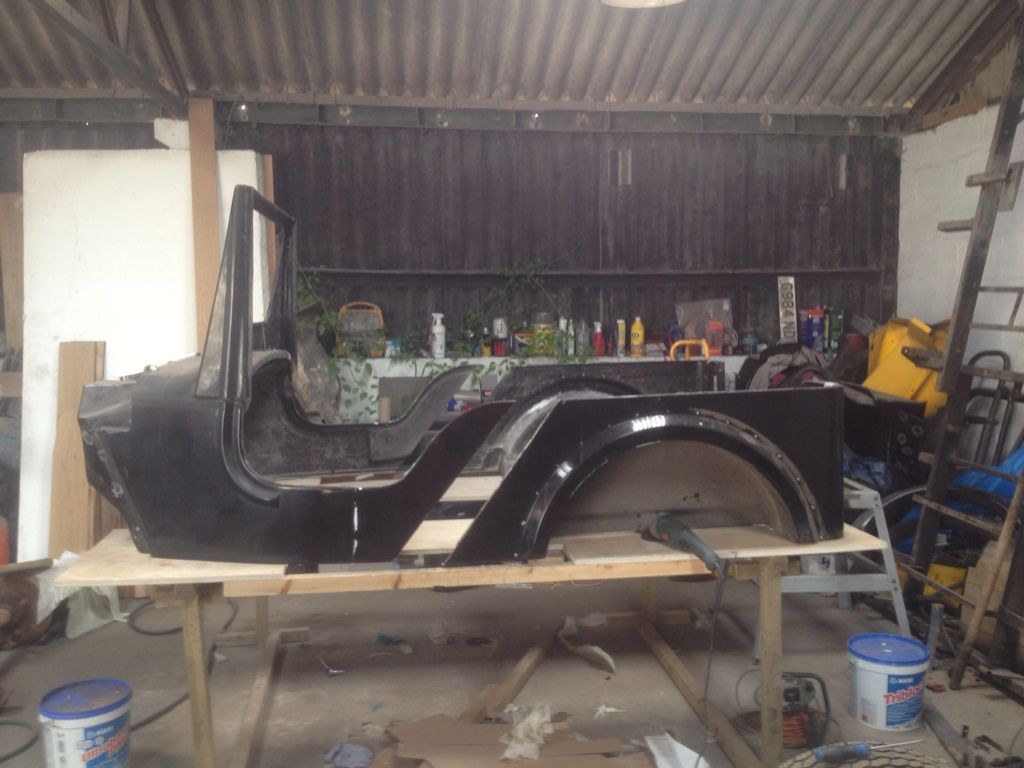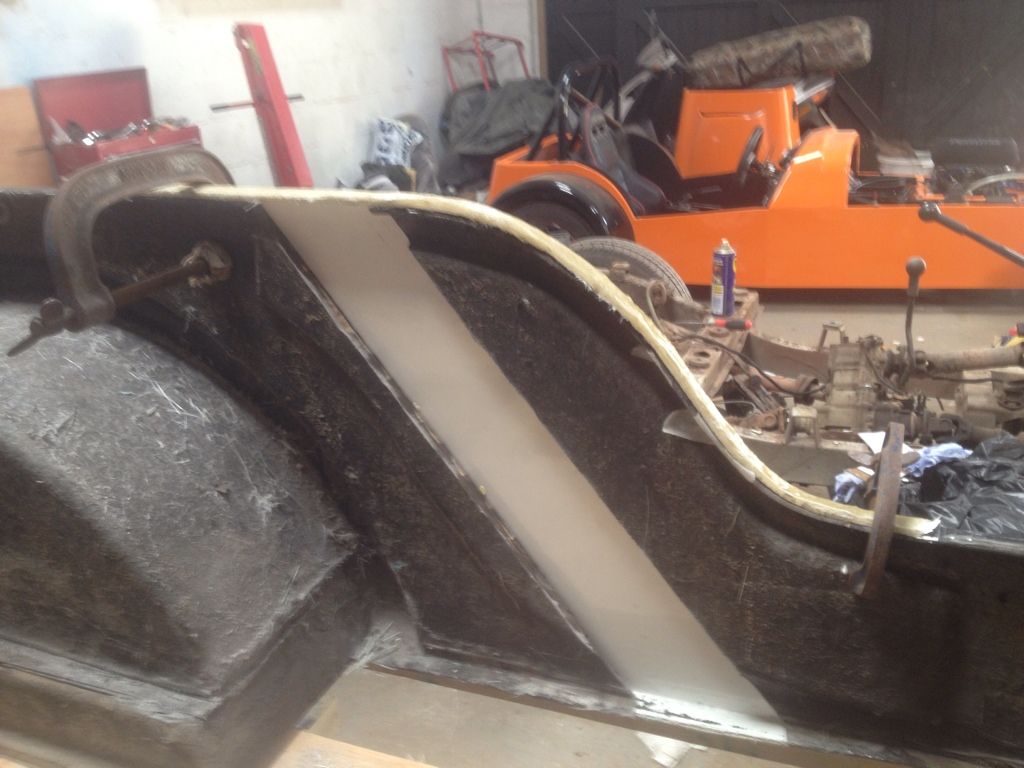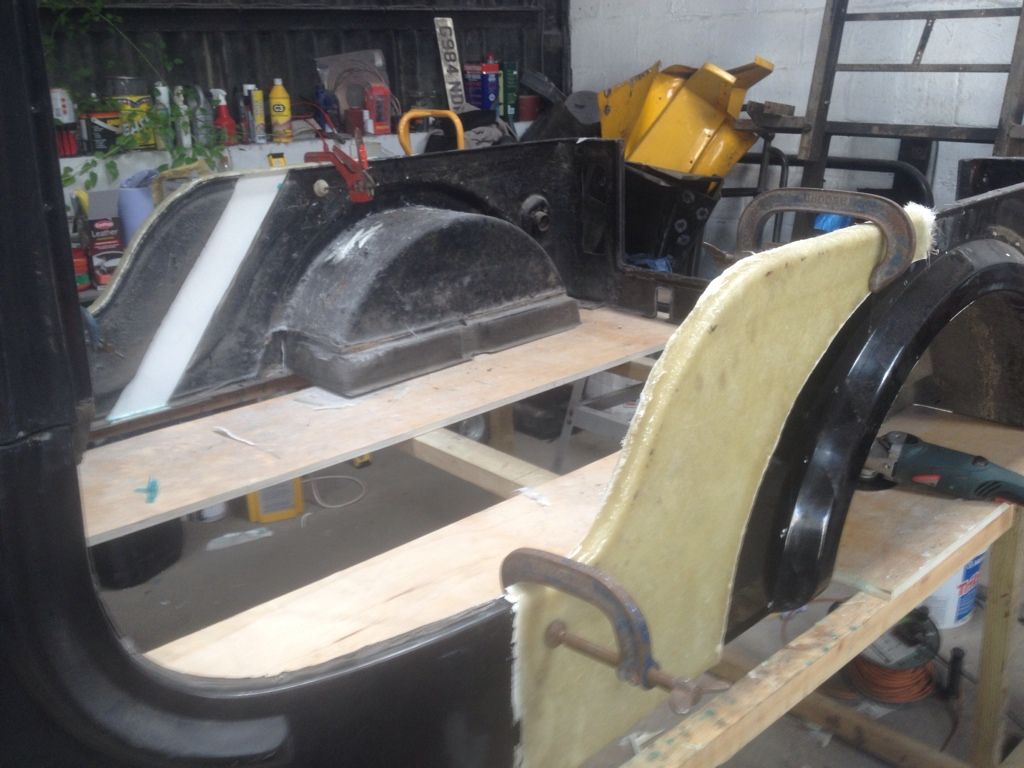



Hi there, I've basically cut my jago body in two for it to be extended to fit a Suzuki chassis
Now I'm joking it back together and obviously don't want it to crack if I can help it, I have already made my mould to lay up against so
that's sorted, I was going to feather both sides of the join down in thickness, then re fibreglass both sides and add a ply strip across the area
to help with strength, is there like a scrim tape like for plastering I should use or does my plan sound sufficient?
Cheers Greg
It should be fine.
I did my rear panel similarly.
I just used fibreglass cloth as what you call scrim and then used normal fibreglass for the rest.
I grinded off a sloped edge at the finish side to help it fill easier to look good.
Just try not build up the rear of the panel too much where it meets the chassis so it doesn't pretrude.
If you butt two straight edges together expect to see the join, if you have a serrated edge then the join is much easier to hide. And the joined edge is much longer.
Best practice is to grind a 12:1 feather. That is to say that if the GRP is 1/4 inch thick then the feather is 3 inches wide. Surfaces should be left rough and the join built up with ever wider pieces of cloth.
So the outer side, should I be building it up with just cloth?
I have 450g chopped strand matting would this be ok or should I get some cloth?
Ill make my current straight cut wavey and feather the edges so thanks for those pointers
quote:
Ill make my current straight cut wavey and feather the edges so thanks for those pointers
ok so as far as cloth, is this what i need?
here
so working on the inside of the join do i need to feather the edges then use the cloth or just normal matting for this side?
Then when i come to do the outer edge ( the bit you will see) do i then need to feather the edges and apply the cloth for strength?
Ill post a pic up in a sec so its clear of how im going about this
Sorry to be a pain about something that maybe really easy but just trying to educate myself and get it as good as possible and strong of course



quote:
Originally posted by corrado vr6
So the outer side, should I be building it up with just cloth?
I have 450g chopped strand matting would this be ok or should I get some cloth?
Ill make my current straight cut wavey and feather the edges so thanks for those pointers
Just seen the pics.
There appears to be some core material, balsa or foam? I would cut all that core material out and work with just the outer skin, working from the
inside. Start with gel coat against the mould face. Then replace the core and lay up a new inner skin over all. That will give the best support to the
repair.
Thanks for your reply, yes your right it's 12mm ply which I have since cut out, so are you saying I won't need any cloth within the repair
at all?
So remove ply (done)
Make straight cut a zig zag
Feather inner edges
Apply mould release to mould
Put acetone applied with a cloth on old fibreglass to soften
Apply gel coat to the mould
Then layer up the thickness using fibreglass matting
Add my ply support back in bridging both parts of the extension
Glass in the ply support
Remove mould after its cured
So on the outside would I then need to feather the edges and apply fibreglass or with what's on done on the inner edges sufficiently strong
enough to help prevent cracking?
Your repair schedule sounds good. There no real need for Woven Rovings in the lay up in your application.
It is always better to work from both sides if you can, particularly in large flat areas, to prevent cracking in the gel. What I have done before is
work exactly as your have described and then after removing the flash mould grind a narrow strip about 2 inches wide along each joint line. I then lay
up a couple or three layers of mat keeping the surface a mil below the surrounding gel face. Then gel the strip and fair up.
The repair is then 3/4 on the inside and 1/4 on the outside and it minimises the final fairing and helps you keep the original shape. This is more
practical with a larger repair area than you have, but anything that you can do from the outside will help.
Cool thanks for that 